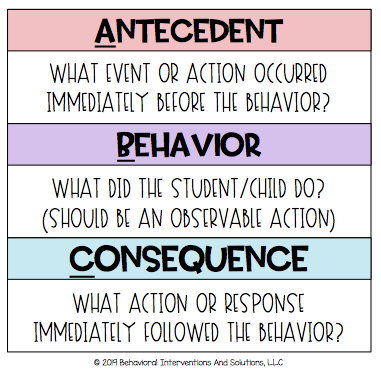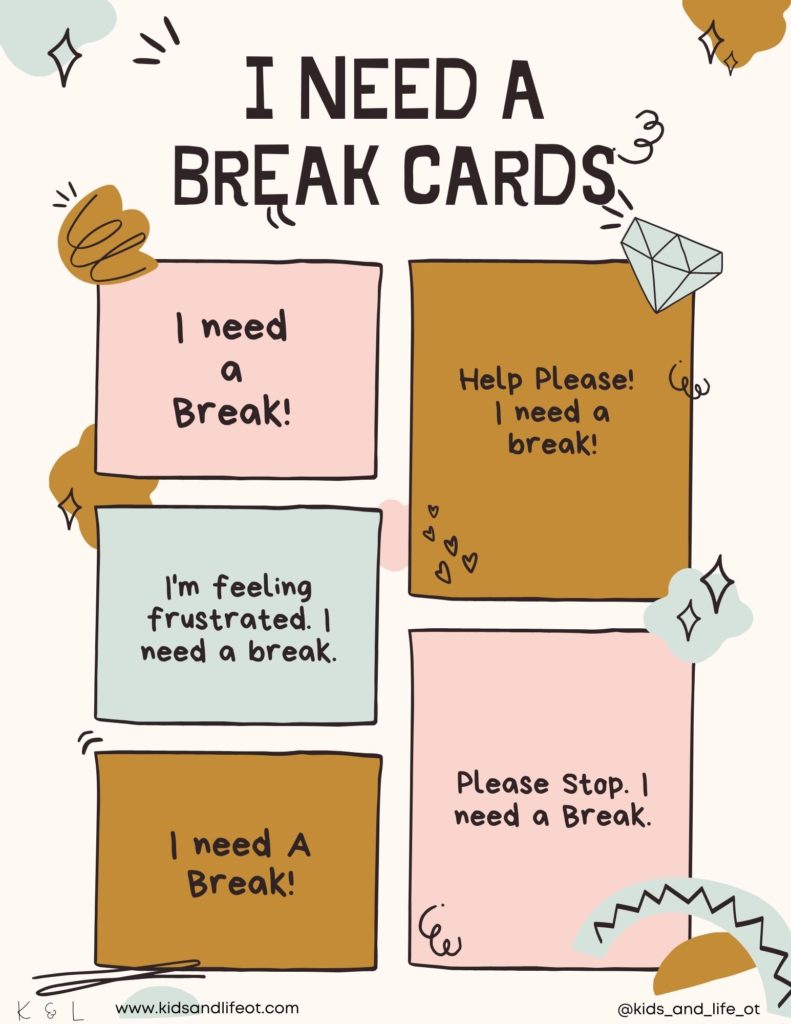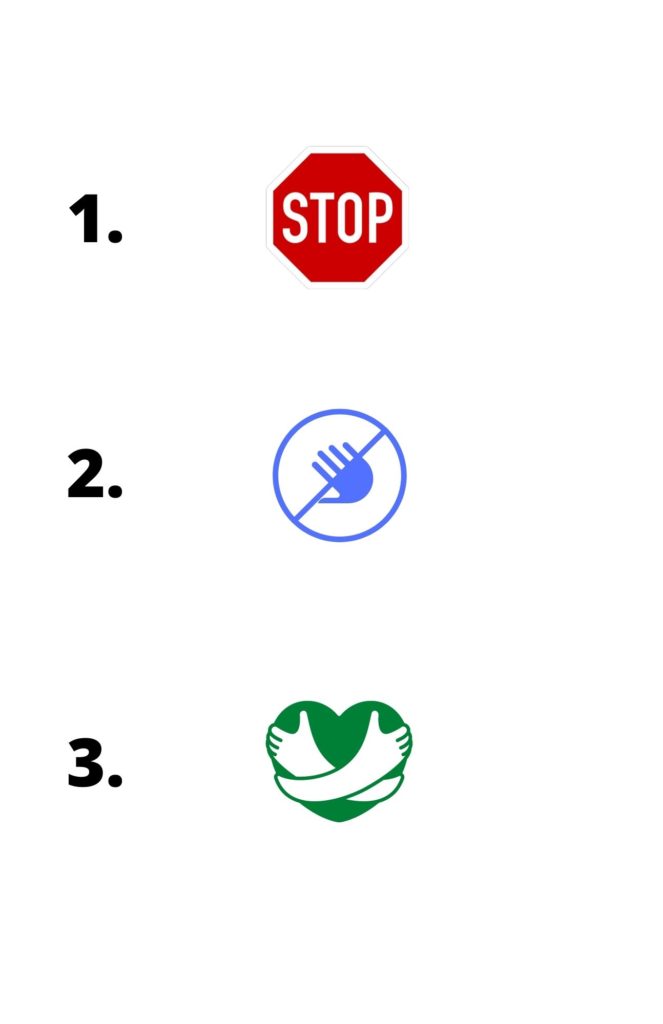The fourth reason that we may see behaviors from children are for satisfying a sensory need. Read along to understand more and how to address them. Check out the 3 other functions of behavior discussed in the initial post here.
So is it sensory or behavior?
As an OT, I get this question all of the time: is it sensory or behavior? I actually hate this question for many reasons. First, it suggests that a child is doing something for one reason or another. Not always the case. Second, “is it sensory” oversimplifies our sensory processing system. Lastly, it takes away the importance of a multi-disciplinary approach when it comes to addressing challenging behaviors. I’ll get into more details, but I had to start there.
Sensory Processing
To start, we should talk about what sensory processing is. This is a very complex, abstract idea that occupational therapists specialize in. We might help identify processing differences, treat significant needs, or assist individuals in managing their daily activities due to processing difficulties.
Here is an entire post on sensory processing. Briefly, it is the way that we take in information from our external world and internal cues, organize it appropriately, and produce a functional response. Individual brains and nervous systems are all wired differently. Sometimes, we are wired in a way that might make us more or less sensitive to certain types of input. Because of sensitivities or preferences, we might display certain behaviors as a result.
Behaviors and Sensory Processing

One function of behavior is solely to get sensory input from an action. This means that an individual is doing something because they like the way it looks, feels, tastes, smells, sounds. They may not be doing it to get attention, to avoid another activity, or to get anything tangible in return. This can be helpful to consider when you are attempting to address behaviors.
How to Assess Behaviors
So how do you know if a child is showing a behavior due to a sensory need? Some behaviors are more obvious than others. For example, self-stimulatory behaviors are typically actions that an individual engages in to feel good and regulated. When a child twirls beads in front of his face, spins wheels while lying on her side, or crawls underneath the couch cushions, typically they are satisfying a bodily need for input.
We can understand why a child is participating in behaviors by considering the ABC approach: looking at the Antecedent (what happened immediately before a behavior), the Behavior itself (what it looks like, what purpose does it seem to be serving), and the Consequence (what happens immediately following a behavior). This can help us see what might be triggering (before) and reinforcing (after) a behavior.

Let’s think of an example:
A child gets off the school bus and paces in the entryway for 10 minutes prior to taking his backpack off and having a snack. Mom has tried distracting, redirecting, and getting him to come inside to watch a show to attempt to help him transition. None of these solutions have helped modify this behavior. After 10 minutes, he removes his backpack and is ready for a snack. We could possibly infer that the school bus (Antecedant) is overwhelming. Pacing (Behavior) helps him feel better. His ability to transition in dependently (Consequence) suggests that he is not looking for attention, tangibles, or attempting to get out of the next activity.
So far the examples of behaviors that serve a sensory purpose have been fairly easy to understand because they don’t need to be managed or changed. If your child engages in self-stimulating behaviors and they are not harming himself, another individual, damaging property, or greatly interfering in his participation in other activities, I say allow them to do so. If needed, set a timer and help them move on when the timer goes off.
How to Address Behaviors
What about those behaviors that we see that are more concerning from a safety perspective? Here are some behaviors that might be more important to redirect or manage. These are potential hazards from a health, safety, and hygiene consideration:
- licking, chewing, mouthing non-food objects
- aggression toward self and others: this might include head hitting or banging, scratching, pushing, hand biting
- elopement (or running away)
- teeth grinding
- fecal smearing
If you have read my other behavior posts, you’ll notice a pattern. There are two ways to address behaviors: by preventing them and responding to them. For either of these, it will be important to understand the child’s sensory system and sensory need. For this, having a skilled occupational therapist will be necessary.
Prevention

In order to prevent a behavior that serves a sensory need, consider giving them the type of input they are seeking ahead of time and in frequent doses throughout the day. This may reduce a need to seek it out inappropriately. You will want to work with an OT to decide on this. But here are some posts to get you started (coming soon).
If the child is sensitive to inputs and tends to become overwhelmed, use tools and sensory breaks throughout the day and during the distressing activity to help them tolerate the task. This might include a designated calm down space and use of head phones or sunglasses to decrease extra input.
Also, use visual supports and practice when the child is calm in order to use alternative methods if they show behaviors in certain situations.
Response and Intervention
When you respond to a behavior that is sensory-seeking or avoiding in nature, try to keep your reaction neutral. This prevents reinforcement of the behavior or allowing it to turn into an attention-seeking behavior. Also, know that your safety and the child’s safety are number one concerns. Consider these strategies when responding:
- Use visual supports to indicate inappropriate behaviors (see below)
- Provide them with alternative sources of input. For example, if the child is head banging or hand biting, try giving calm, deep pressure to their head or hand.
- And give a way to communicate a need for a sensory break or type of input. Use “I need a break” cards, such as those included here.
- Keep them as safe as possible with equipment as needed until they calm down, then provide intervention*. This could include use of a helmet or hand glove or splint to protect their body parts.
- Distract or redirect, if possible, with other preferred sensory inputs. This might include swinging, jumping, use of a calm space or fidgets, chew tool, music, or audiobooks.
- Incorporate sensory input into their daily activities and play.
*seek out help from an OT or behavioral interventionist for this

Use an easy visual to encourage children to request a break before they show negative behaviors 
Provide a simple visual to redirect behaviors away from aggression
Oftentimes, it can be helpful to implement sensory input throughout the day that helps a child feel regulated. When someone feels off, they might behave in a way that is challenging. We all do this, right? Remember kids can’t always say: I need to go for a run. I need a minute to myself.
When things get tricky
There are some behaviors that may have a piece of a sensory processing, but are also incredibly complex in nature. The ones that I think about for this are hair pulling (trichototillomania), skin picking, food hoarding, and other obsessive-compulsive tendencies. These behaviors may serve some sensory need, but also should be addressed from a psychologist or psychiatrist’s perspective.
Also, gagging/vomiting surrounding feeding can be more complex than just a sensory sensitivity. This is something that may start as a behavior due to a sensory need that morphs into something that seek attention or avoidance of a mealtime. It is best to consult a behavioral specialist, your pediatrician, an OT skilled in feeding, and/or a gastroenterologist.
After reading this, I hope it helps bring light to the complexity of our sensory systems and the behaviors that result. So is it sensory or behavior? You might need professional help in determining that. But know that it is complex and could be multifaceted. Don’t be hesitant to seek out a multidisciplinary approach. My opinion: if a child exhibits a behavior that does not need to be altered, let it be. If they need certain sensory inputs, work with an OT to figure out appropriate replacement strategies to offer that to them.
Behavioral Interventions and Solutions: Functions of Behavior
Functions of Behavior: Why Behavior Happens





One thought on “When Behaviors are Sensory Related: How to determine and address”